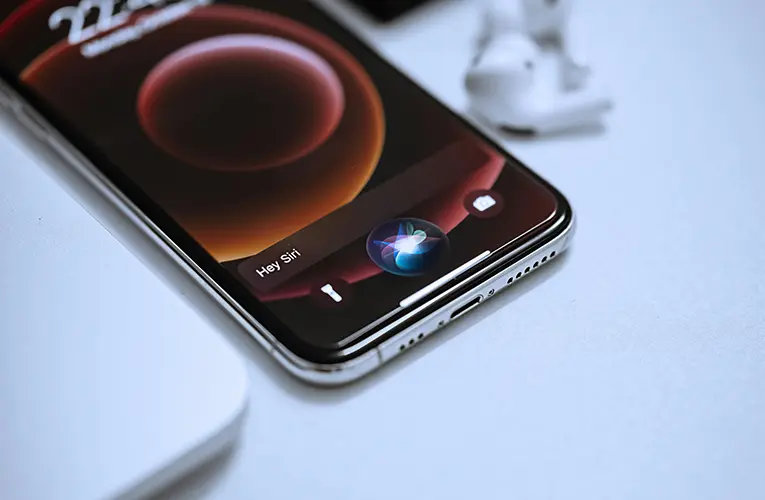“Digital Detox: Tips for Unplugging and Reconnecting”
Creating a comprehensive guide on “Digital Detox: Tips for Unplugging and Reconnecting” involves providing practical advice and strategies for reducing screen time, managing digital habits, and improving overall well-being. Here’s a detailed outline and overview for an engaging and informative guide:
### Outline:
1. **Introduction**
– Definition and importance of digital detox
– Overview of the impact of excessive screen time on well-being
2. **Understanding the Need for a Digital Detox**
– The rise of digital dependency
– Psychological and physical effects of excessive screen time
– Benefits of unplugging and reconnecting
3. **Assessing Your Digital Habits**
– Identifying areas of concern
– Tools and apps to track screen time
– Reflecting on the impact of your digital habits
4. **Setting Goals for Your Digital Detox**
– Defining what you want to achieve
– Creating realistic and specific goals
– Developing a detox plan that suits your lifestyle
5. **Practical Tips for Unplugging**
– **Daily Habits:**
– Establishing screen-free times and zones
– Techniques for managing notifications and app usage
– **Tech-Free Activities:**
– Finding offline hobbies and activities
– Creating tech-free zones in your home
– **Social and Family Engagement:**
– Encouraging face-to-face interactions
– Organizing offline social activities
6. **Digital Detox Strategies for Work and Productivity**
– Managing work-related screen time
– Setting boundaries for work and personal life
– Techniques for improving focus and productivity
7. **Maintaining Your Digital Detox**
– Developing long-term habits for balanced screen use
– Tools and strategies for sustaining a healthy digital lifestyle
– Handling setbacks and staying motivated
8. **Reconnecting with Yourself and Others**
– Exploring mindfulness and self-reflection
– Strengthening relationships through quality time
– Engaging in activities that foster personal growth and well-being
9. **Case Studies and Success Stories**
– Real-life examples of successful digital detoxes
– Insights and lessons learned from individuals and organizations
10. **Conclusion**
– Recap of key points
– Encouragement to start and maintain a digital detox journey
—
### Detailed Overview:
#### **Introduction**
Begin by explaining what a digital detox is and why it’s becoming increasingly relevant in today’s technology-driven world. Highlight the need for balance in our digital lives and provide a brief overview of the negative impacts of excessive screen time on mental and physical health.
#### **Understanding the Need for a Digital Detox**
– **The Rise of Digital Dependency:** Discuss how digital devices have become central to daily life and the extent of their influence.
– **Psychological and Physical Effects:** Examine the effects of constant connectivity, including stress, anxiety, sleep disturbances, and decreased productivity.
– **Benefits of Unplugging:** Highlight the advantages of a digital detox, such as improved mental clarity, better relationships, increased productivity, and enhanced overall well-being.
#### **Assessing Your Digital Habits**
– **Identifying Areas of Concern:** Help readers recognize areas where they might be over-reliant on digital devices, such as social media, gaming, or email.
– **Tools and Apps:** Introduce tools and apps that can track screen time and usage patterns, such as digital wellbeing features on smartphones.
– **Reflecting on Impact:** Encourage self-reflection on how digital habits affect daily life and well-being.
#### **Setting Goals for Your Digital Detox**
– **Defining Objectives:** Guide readers in setting clear and achievable goals for their digital detox, such as reducing screen time by a certain percentage or designating specific hours as screen-free.
– **Creating a Detox Plan:** Help readers develop a personalized detox plan, including steps for reducing screen time and incorporating offline activities.
– **Realistic and Specific Goals:** Emphasize the importance of setting realistic goals that fit individual lifestyles and needs.
#### **Practical Tips for Unplugging**
– **Daily Habits:**
– **Establishing Screen-Free Times:** Suggest creating specific times each day for unplugging, such as during meals or before bedtime.
– **Managing Notifications:** Advise on how to manage notifications by turning off non-essential alerts and setting specific times to check emails and messages.
– **Tech-Free Activities:**
– **Finding Offline Hobbies:** Encourage exploring offline hobbies like reading, gardening, or crafting.
– **Creating Tech-Free Zones:** Recommend setting up areas in the home where digital devices are not allowed, such as the dining room or bedroom.
– **Social and Family Engagement:**
– **Face-to-Face Interactions:** Promote the importance of in-person interactions and suggest ways to foster meaningful connections.
– **Organizing Offline Activities:** Provide ideas for offline social activities, such as board games, outdoor adventures, or cooking together.
#### **Digital Detox Strategies for Work and Productivity**
– **Managing Work-Related Screen Time:** Offer tips for managing screen time related to work, such as setting boundaries and scheduling breaks.
– **Setting Boundaries:** Advise on creating clear boundaries between work and personal time to prevent burnout.
– **Improving Focus and Productivity:** Suggest techniques for enhancing focus, such as the Pomodoro Technique or using apps that block distracting websites.
#### **Maintaining Your Digital Detox**
– **Developing Long-Term Habits:** Share strategies for maintaining a balanced digital lifestyle, such as regular digital detox periods and mindful technology use.
– **Tools and Strategies:** Recommend tools and strategies for staying on track, such as apps that help manage screen time or journaling about digital habits.
– **Handling Setbacks:** Provide advice for dealing with setbacks and staying motivated, including how to re-evaluate and adjust goals if needed.
#### **Reconnecting with Yourself and Others**
– **Mindfulness and Self-Reflection:** Discuss the benefits of mindfulness practices and self-reflection in reducing digital dependency and fostering personal growth.
– **Strengthening Relationships:** Highlight the importance of quality time with loved ones and suggest ways to deepen relationships through shared experiences.
– **Engaging in Personal Growth:** Encourage readers to pursue activities that promote personal development and well-being, such as learning new skills or setting personal goals.
#### **Case Studies and Success Stories**
– **Real-Life Examples:** Share stories of individuals or organizations that have successfully implemented a digital detox and the positive outcomes they experienced.
– **Insights and Lessons:** Provide insights and lessons learned from these case studies to inspire and motivate readers.
#### **Conclusion**
Summarize the key takeaways from the guide, emphasizing the importance of finding balance in digital usage. Encourage readers to start their own digital detox journey and remind them of the potential benefits for their overall well-being.
—
This detailed overview provides a structured approach to creating a comprehensive guide on digital detox. Each section can be expanded with practical tips, expert advice, and real-life examples to engage readers and help them successfully unplug and reconnect.









